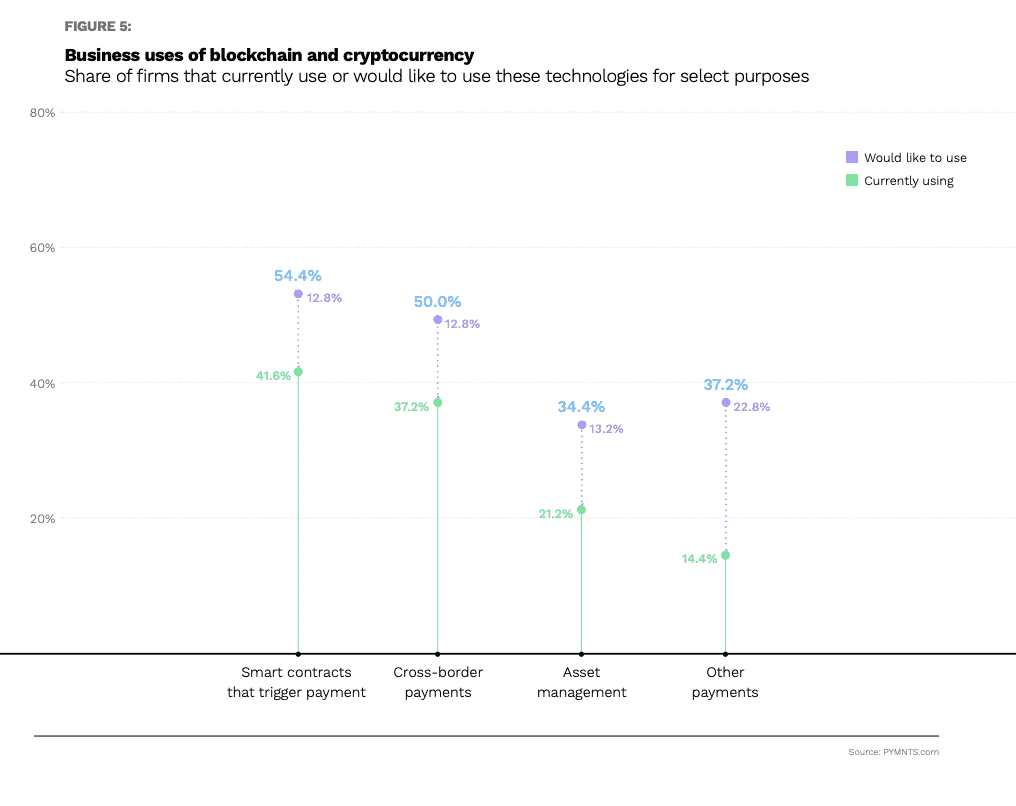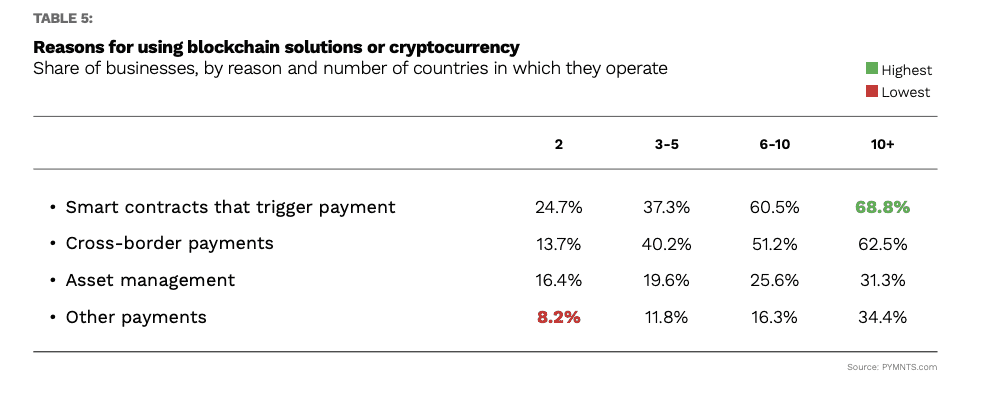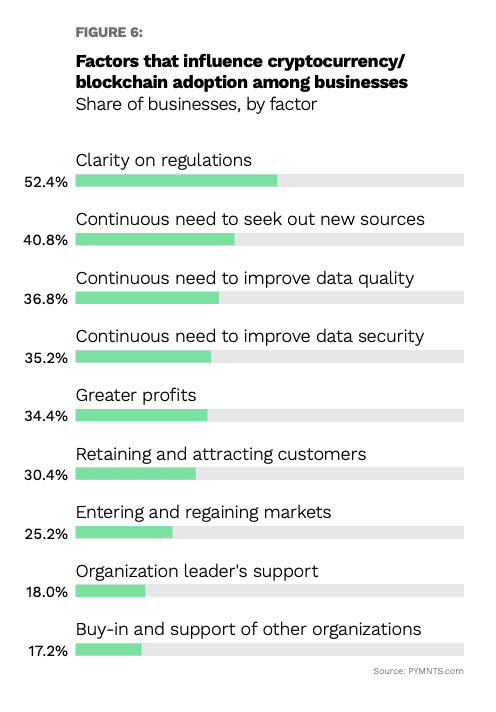42% of Cross-Border Firms Use Blockchain-Based Smart Contracts That Trigger Payment

Decentralized finance solutions have transformed the payments landscape, presenting a new vista of possibilities for seamless cross-border expansion for multinationals and businesses aspiring to launch new global initiatives.
Cross-border firms have many use cases for cryptocurrency and blockchain. The leading use case is blockchain-based smart contracts that trigger payment, which 42% of businesses currently employ and 13% more would like to start using in the future, according to “Cryptocurrency, Blockchain and Cross-Border Payments,” a PYMNTS and Circle collaboration based on extensive surveys of executives at 250 multinational businesses and 250 financial institutions.
Get the report: Cryptocurrency, Blockchain and Cross-Border Payments: How Multinationals Leverage New Technology to Optimize Business Payments
The second most common use case for cryptocurrency and/or blockchain is cross-border payments, which 37% of businesses currently do and another 13% want to begin doing. Other common ways that multinational firms utilize cryptocurrency and blockchain include asset management and other payments.
 The greater the number of countries in which firms operate, the greater the likelihood that they use cryptocurrency and/or blockchain for these purposes. For example, 69% of businesses that operate in more than 10 countries use smart contracts that trigger payment, as do 61% of those that operate in six to 10 countries. This falls to just 37% among companies that operate in three to five countries, and 25% for those operating in two countries. The pattern is similar across the other leading use cases.
The greater the number of countries in which firms operate, the greater the likelihood that they use cryptocurrency and/or blockchain for these purposes. For example, 69% of businesses that operate in more than 10 countries use smart contracts that trigger payment, as do 61% of those that operate in six to 10 countries. This falls to just 37% among companies that operate in three to five countries, and 25% for those operating in two countries. The pattern is similar across the other leading use cases.
 Many factors influence whether cross-border businesses adopt cryptocurrency and/or blockchain as financial tools. The leading factor, cited by 52% of respondents, is having more clarity regarding regulations that govern these technologies. The need to improve operational efficiency (41%), data quality (37%), data security (35%) and profits (34%) are other top issues. Also cited are retaining and attracting customers, entering and regaining markets, organization leaders’ support, and the buy-in and support of other organizations.
Many factors influence whether cross-border businesses adopt cryptocurrency and/or blockchain as financial tools. The leading factor, cited by 52% of respondents, is having more clarity regarding regulations that govern these technologies. The need to improve operational efficiency (41%), data quality (37%), data security (35%) and profits (34%) are other top issues. Also cited are retaining and attracting customers, entering and regaining markets, organization leaders’ support, and the buy-in and support of other organizations.
